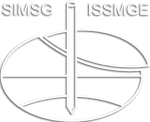Applying electrokinetic technology coupled with enzyme-induced carbonate precipitation treatment to Cu- and Pb-contaminated loess remediation
Applying electrokinetic technology coupled with enzyme-induced carbonate precipitation treatment to Cu- and Pb-contaminated loess remediation
Excessive copper (Cu) or lead (Pb) in soils can cause serious threats to surrounding environments and human health. In the present work, a modified EK (electrokinetic) reactor was proposed where the single and multiple EICP (enzyme-induced carbonate precipitation) treatments were incorporated into a permeable reactive barrier (PRB) for the first time to remove Cu and Pb metals. Results showed that the EK-PRB technology outperformed the EK technology. The PRB worked with the cathode electrolyte well to reduce the remaining Pb2+ by about 35%. The effect of multiple EICP treatments increased the potential of combining Cu2+/Pb2+ with CO32-, which caused difficulty in performing the electromigration and electroosmosis during the EK remediation. It, however, depressed the focusing effect. The higher cathode pH, induced by the effect of a single EICP treatment, was accompanied by the copper-ammonia complex formation, improving the fraction of Cu2+ removed by the cathode electrolyte well. The Pb removal behaved similarly to the Cu removal.
W. C. Cheng; L. Wang; Z. F. Xue; M. M. Rahman
18th European Conference on Soil Mechanics and Geotechnical Engineering (ECSMGE2024)
E - Environment, water and energy
